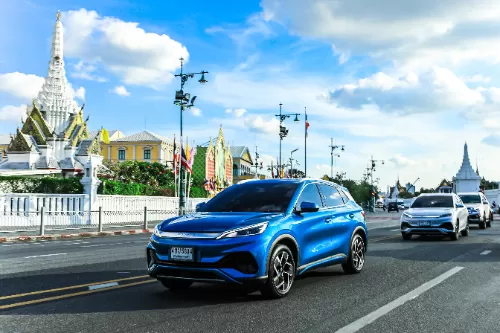Click to Get Big Benefits

The Driveway Makeover
Gone are the days when a Tesla was the only NEV on the block. Now, it’s Ford F-150 Lightnings hauling kayaks, Hyundai Konas shuttling kids to soccer practice, and Rivians sporting bumper stickers that say “My Other Car Is a Bicycle.” New Energy Vehicles have quietly infiltrated suburbia, blending into school pickup lines and grocery store parking lots.
The shift isn’t about saving the planet (though that helps). It’s about New Energy Vehicles solving real-life headaches. Imagine skipping $100 weekly gas stops or forgetting oil changes altogether. Your neighbor’s EV isn’t a statement—it’s a time machine that gives them back weekends previously lost to maintenance.
Types of NEVs
Not all New Energy Vehicles are created equal. Your neighbors might opt for:
Battery Electric Vehicles (BEVs): Fully electric, zero-emission models like the Tesla Model 3 or Nissan Leaf. These are ideal for city dwellers and short commutes, with ranges now exceeding 300 miles on a single charge.
Plug-in Hybrid Electric Vehicles (PHEVs): Combines electric power with a gas engine, offering flexibility for longer trips. The Toyota Prius Prime and Hyundai Tucson PHEV are popular choices, blending efficiency with peace of mind.
Hybrid Electric Vehicles (HEVs): Uses both gas and electric power without plugging in. The Toyota Camry Hybrid and Ford Escape Hybrid deliver improved fuel economy (often 50+ MPG) without sacrificing range.
Each type caters to different needs, from reducing emissions to cutting fuel bills.
The Benefits of NEVs: Greener, Smarter, and Cheaper
The appeal of New Energy Vehicles extends beyond the driveway:
Environmental Impact: BEVs produce zero tailpipe emissions, helping cities combat air pollution. Even PHEVs and HEVs reduce fossil fuel reliance, aligning with global climate goals.
Technological Advancements: NEVs often come packed with AI-driven features like adaptive cruise control, voice-activated navigation, and over-the-air updates. Brands like Tesla and Ford are pushing boundaries with semi-autonomous driving capabilities.
Quieter and Smoother Rides: Electric motors eliminate engine noise, providing a serene driving experience. Instant torque delivery also means faster acceleration.
For families, these benefits translate to safer, more comfortable trips—all while saving money.
The Social Network Effect
New Energy Vehicles thrive on community. Neighborhood Facebook groups share tips on snagging tax credits, finding free chargers at malls, or troubleshooting garage installations. There's unspoken pride in comparing whose car uses the least energy during heat waves. This isn’t just eco-consciousness—it's FOMO. When half the block starts charging at home, the other half wonders: Am I throwing money away on gas?
Conclusion
The rise of New Energy Vehicles next door isn't a trend—it's a tipping point. As used EVs flood markets and charging becomes as routine as Wi-Fi, gas cars risk becoming the new landline phones: functional but faintly embarrassing.
So next time you admire a neighbor's silent, unassuming ride, ask for a test drive. The future of driving isn’t on a dealership lot. It's parked across the street, charging peacefully while everyone else sleeps.
After all, keeping up with the Joneses just got a lot quieter—and cheaper.

All News
Others
- Terms of use
- Privacy Policy
